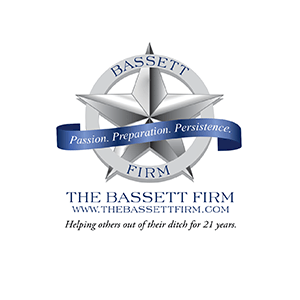Could that $99.00 drone helicopter you bought your child for Christmas be your ticket to JAIL??
Introduction:
So Little Johnny asked for the Batman drone quadricopter for Christmas. Christmas morning found it under the tree. After two months of your new flying Ace, call-sign “Maverick” buzzing the neighborhood, annoying the neighbors and crashing the drone into the house, the car, the neighbor’s window-you have that sudden sinking feeling asking yourself, “Is this going to get me in trouble with the law?” and “Am I responsible if the drone causes damage?”
In this first installment of a series on drones, we take you through a brief history of drone and aircraft regulation, along with the current criminal laws that are in play, to help you navigate safely without ending up in the pokey.
Background:
The history of “drones” began early in the 20th century with the innovation of unmanned biplanes in WWI. Today, Unmanned Aircraft Systems (UAS), “drones,” are used in many different ways by a variety of users. For example, they are used for the military, corporations, the federal government, and recreational users.
The Federal Aviation Agency was created in 1958, defining “aircraft” as “[…] any contrivance now known or hereafter invented, used, or designed for navigation of or flight in the air.” However, in 2014, this definition was challenged in FAA v. Pirker. In Pirker, the court defined “aircraft” as “any device used for flight in the air.” The Defendant claimed that his device was not regulated because it was a “model aircraft.” However, the court ruled against him, noting that the FAA essentially controls everything manmade that flies in the air.
TX Criminal Law:
As drones with cameras have become more prevalent, concerns of privacy have come to the forefront in Texas. The Texas Legislature addressed drone law in 2013 with the Texas Privacy Act. Texas drone law makes no distinction between commercial, public, or recreational use of drones.
In particular, the act imposes criminal penalties for drones in Sect. 423.003. The crux of the penalty portion of the act is concerned with “images” taken by drones and used improperly. For instance, it is a class C misdemeanor to use a drone to capture an image of an individual or private property with the intent to conduct surveillance on the individual or property without the property owner’s consent to capture said image. The statute defines “Image” as “any capturing of sound waves, thermal, infrared, ultraviolet, visible light, or other electromagnetic waves, odor, or other conditions existing on or about real property in this state or an individual located on that property.
Not all images captured by a drone are deemed unlawful. The statute has over 37 exemptions-all of which apply only to law enforcement, first responders, utility companies, and city municipalities and none of which apply to private citizens. Thus, the general public should be concerned with the possibility of being charged for unlawful use of a drone.
A violation of this statute can result in either a Class B or C misdemeanor, depending on possession and disclosure of an “image” obtained by a drone. Specifically, it is a Class C misdemeanor to possess the images and a Class B Misdemeanor to disclose, display, distribute, or use the image.
Each “image” captured, possessed, and/or disclosed is considered a separate violation. A valid defense to such a charge is destroying the “image” as soon as the drone owner has knowledge of the “image.”
Furthermore, under the Privacy Act, unlawful operation of a drone over critical infrastructures such as: refineries, power plants, water treatment plants, ports, railroad switch yards, and freight transport facilities is a Class B misdemeanor.
The future is now, and drones are more and more becoming part of our world. It is in the spirit of justice for all citizens to know their rights when confronted with a drone and to use a drone within the confines of the statute. Always be mindful of what is above you, literally.
For more information on drone law, please contact us at: [email protected].
https://www.thenation.com/article/brief-history-drones/
Id.
Federal Aviation Act of 1958, Pub. L. No. 85-726, Sect. 101(5), 72 Stat. 731, 737 (1958).
FAA v. Pirker —
See, TX GOVT CODE Sect. 423.003(a): “a person commits an offense if the person uses an unmanned aircraft to capture an image of an individual or privately owned real property in this state with the intent to conduct surveillance on the individual or property captured in the image.”
TX GOVT CODE §§ 423.002, 423.003
TX GOVT CODE § 423.001
TX GOVT CODE § 423.002
TX GOVT CODE § 423.004
Id.
Id.

